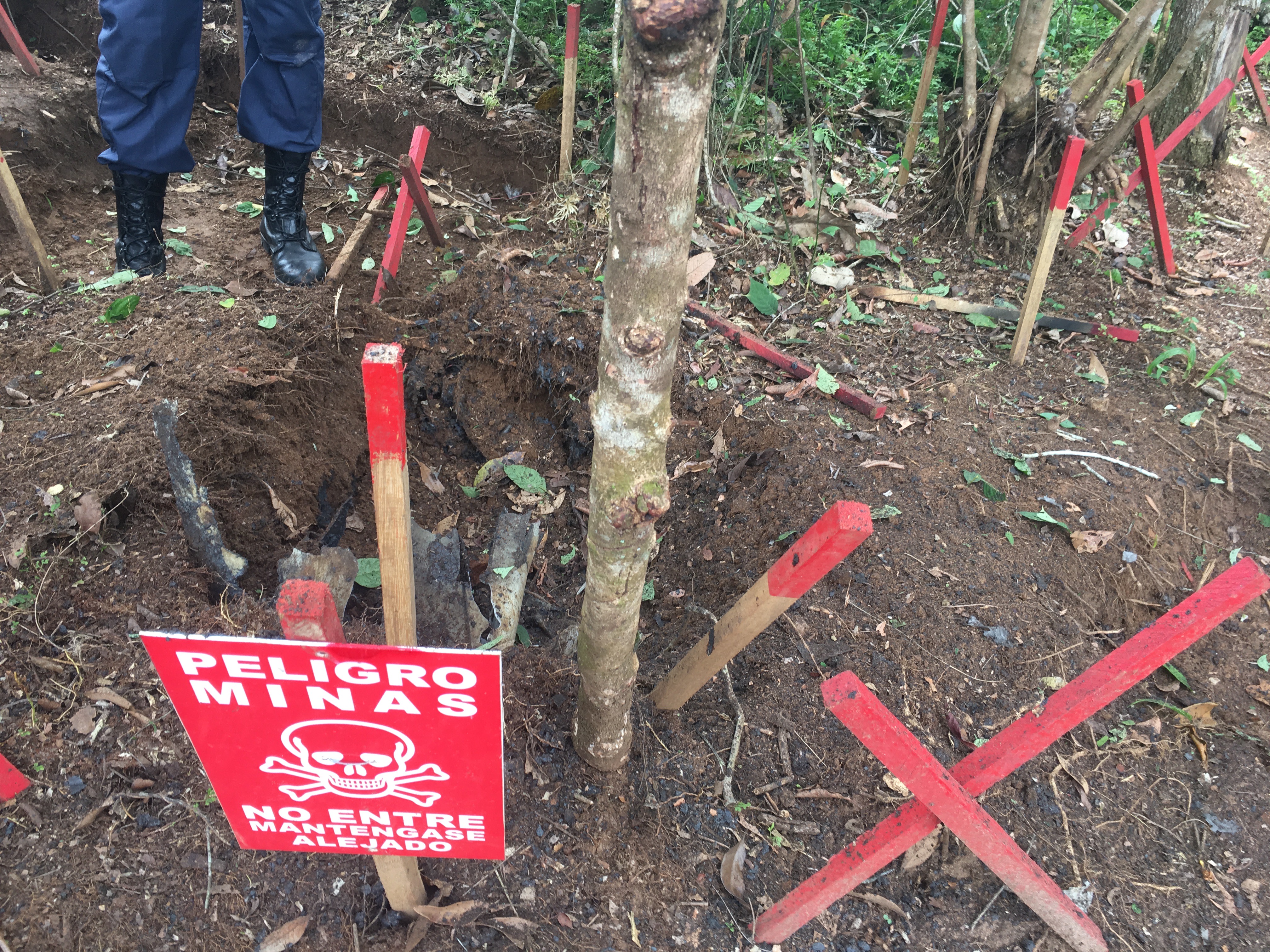In our everyday lives we encounter and are exposed to a dizzying array of chemicals – through the air we breathe, water we drink, food we eat, products we buy, work we do, and environments we move through. A recent review of the scientific literature estimates that the accelerating mass-production of chemicals has led to the accumulation of 350,000 “novel entities” (human-made chemicals that did not previously exist) in the environment.[1] They suggest this exceeds the “planetary boundary” for chemical pollution, meaning it is and will continue to disrupt the operation of ecological systems and have major impacts on human health.
Category: Toxicity
Chemical Colonialism: Environmental justice and industrial epidemics
In Fabian Scheidler’s The End of the Megamachine, he draws on the work of environmental historian Lewis Mumford to show how certain forms of social organization seem machine-like, even if, in the end, they are made up by people. To recognize that the totalizing systems we are forced to engage with daily are not inexorable machines, but the results of an infinite number of decisions by an enormous number of people, can both be depressing or hope giving, depend on how this fact is viewed.
Scheidler’s diagnosis of the megamachine is important, because he focuses on the military need for mining, which lead to industrialization, which has also driven the chemical industry. The corporate-state complex has been predicated on increased control and manipulation of people and the natural environment – colonialism has occurred at countless levels before it has been able to move on to the next. “Before colonizing the world, Europe itself had been brutally colonized,” Scheidler writes.[1] The missionary purpose of religion, doing God’s work by culling infidels and baptizing more and more converts into the flock, served as the template for colonization, which now takes the secularized face of accumulation to support ever increasing disparities in quality of life and lifestyle.
The irony of instrumentalism, even for the highest conceivable good becomes apparent when we look historically at the collateral damage written out of hegemonic discourse. As Scheidler describes it, “[t]he narrative of a mission to save humanity justifies and allows the destruction of other forms of social organization.”[2] These are the casualties of the war on nature: people, places, relationships; all for the sake of a larger secularized religious project of progress. The pretext for the ‘side-effect’ of pollution has been ‘better living through science’ – the always-delayed promise of trickle-down prosperity making the serial sacrifice of the marginalized worth it. Political theorist Danielle Allen describes the democracy-eroding consequences of requiring certain portions of the population to sacrifice for the collective without equitably distributing the costs and benefits.[3] Too often, the expectation of personal sacrifice for the collective gets codified into systematic expectations, creating hierarchies of dominance congealing into discrimination.
Of course, the promised exchange of abundance for ecological destruction is nothing new, but in fact has been a central tenet of extractivism since the mining operations of medieval Europe. In order to see the global displacement of harms from economic centers to economic peripheries as not new, but based on the megamachine permanent war economy of maximum exploitation, Carolyn Merchant reminds us in her The Death of Nature that complaints and gaslighting around environmental injustice existed in pre-colonial Europe as well:
most mines occurred in unproductive, gloomy areas. Where the trees were removed from more productive sites, fertile fields could be created, the profits from which would reimburse local inhabitants for their losses in timber supplies. Where the birds and animals had been destroyed by mining operations, the profits could be used to purchase “birds without number” and “edible beasts and fish elsewhere” and refurbish the area.
Carolyn Merchant [4]
Since the twentieth century, this same logic has been applied to industrialized mining worldwide. Hypothetical future returns justify present damage, including destruction of the ecological basis of local cultures, a phenomenon termed “semiocide” (semiotic ecocide/suicide) for the demolition of meaning that comes from the loss of memory and situatedness associated with habitat destruction.[5]
Phosphorus mining as paradigmatic of extractivism
To see how this plays out in recent times, investigating the case of how mining led to ecological destruction, which despite just compensation in a different currency, led to semiocide and the decline of a once vibrant culture, let’s turn to the mining of phosphorus on the island of Nauru.
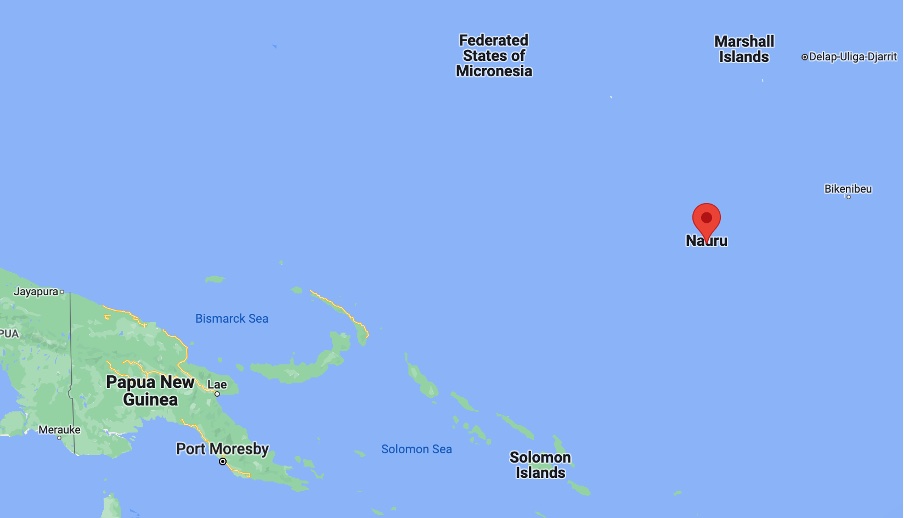
This fifteenth element on the periodic table accounts for 1% of human body mass, and is crucial for agriculture. In a 1959 essay, Isaac Asimov called phosphorus “life’s bottleneck,” as perhaps more than any other element it determines the carrying capacity for planet earth. Historically, phosphorous-rich human waste was a prized fertilizer, freely available and essential for growing food. Romans used to pay households for collecting their urine to wash the public laundry, as it made an excellent detergent for clothes. But the sanitation revolution killed access to human sources of phosphorous – literally flushing it down the toilet into the sea, where it becomes inaccessible for recapture. This is part of a larger tendency of industrialized humans to take from the earth without giving back, creating what Marx called the “metabolic rift” – the short-circuiting of circular material economies.
Now, we dig up mountains to mine the same precious element we flush down the toilet. With the discovery of mineral deposits of phosphate rock, these nonrenewable resources temporarily lended an unnatural amount of otherwise scarce renewable resources to grow the human population and unsustainable industrialized practices. (The parallels to fossil fuel (especially oil) extraction are manifold.) Between 1950 and 2000, a sixfold increase in global phosphate-rock production has occurred. Yet, even with mining these deposits, demand is rising twice as fast as supply. And this production has come at astronomical costs.
In 1900 phosphate was discovered on the economically poor but culturally and ecologically prosperous central Pacific island of Nauru. The residents were given an offer too good to refuse – partly because they had little choice in the matter of imperial powers hungry for resources – and in a forward-thinking act at the time, a trust was set up for the island’s 10,000 inhabitants, with the accumulated proceeds from mining to provide income in perpetuity. During the height of the almost century of phosphorous exploitation, the people of Nauru had some of the highest incomes worldwide. However, after the resources were exhausted in the 1990s, and the funds in the trust shrank, the social disintegration and ecological devastation which had been momentarily bracketed and tolerated due to the influx of non-renewable quick money, reemerged like whiplash. About 80% of the once-lush island is totally devastated from phosphate strip-mining, and alcoholism, depression, and diabetes plagues the population.[6] In a 2019 exposé, children interviewed would respond to even simple questions with “I want to kill myself.”
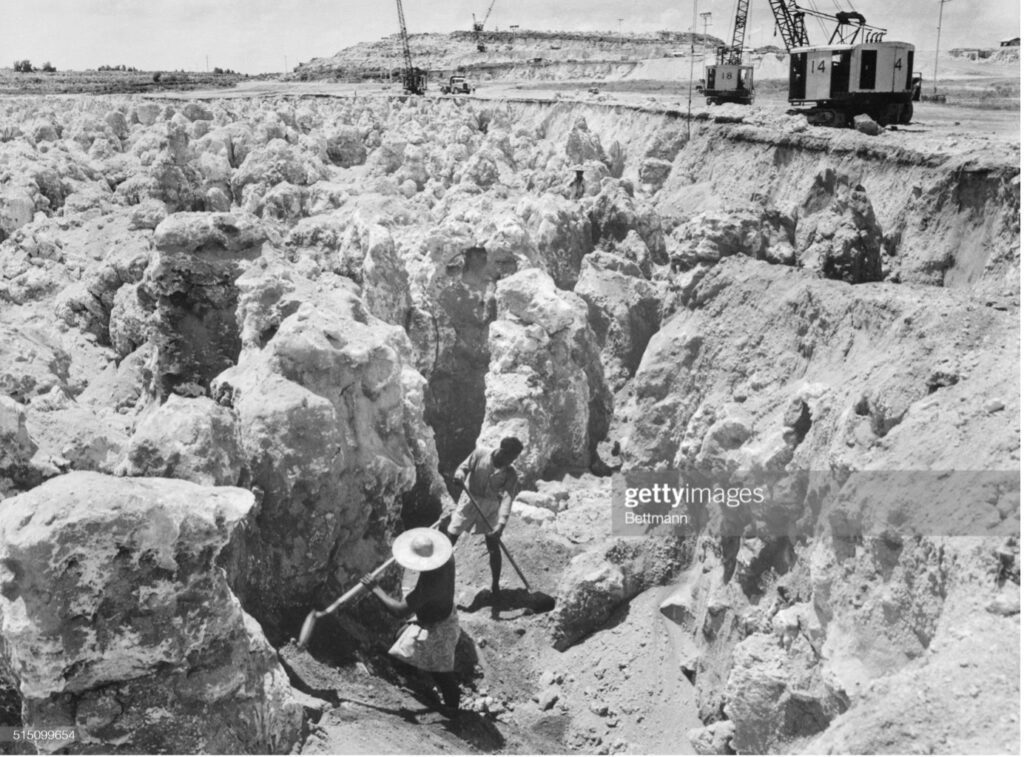
Even all the money in the world couldn’t put the country of Nauru back together again. This is a basic wound in environmental justice that too easily gets overlooked in settlements and post facto compensatory schemes. The Ponzi scheme of exchanging natural “capital” for financial “capital” and pretending that the denominator is the same, instead of an incommensurable exchange, is partly to blame for Nauru being not an outlier, but the paradigmatic case for extractivism. As historian of the megamachine Robert Proctor calls the structured ignorance that makes such unfortunate ‘mistakes’ so common, ignorance is often actively constructed to instrumentalize some people for the sake of others. In other words, the epistemological foundation such schemes are based on are “made, maintained, and manipulated by means of certain arts and sciences.”[7]
Overcoming Regulatory Whack-a-Mole
Injustice anywhere is a threat to justice everywhere.
Rev. Dr. Martin Luther King, Jr.
The relationships entrenched in mining are paradigmatic but not exceptional for chemical pollution and the strategy of the chemical and fossil fuel industries. For example, a globalized world of trade makes too easy the ball-and-cup street trick of carbon accounting, allowing a false sense of accomplishment when all rich countries have done is export their emissions, rather than reducing them.[8] Whereas Europe and the US suffered unbearable pollution in the 1960s and 70s, now it is Accra, Hotan, Manikganj, Delhi, which are the manufacturing centers, suffering locally the pollution from the production of products exported to richer areas. The Environmental Kuznet’s Curve (EKC) was wrong: pollution doesn’t go down when people are rich enough to realize their industrial culture is killing them—it just gets exported.
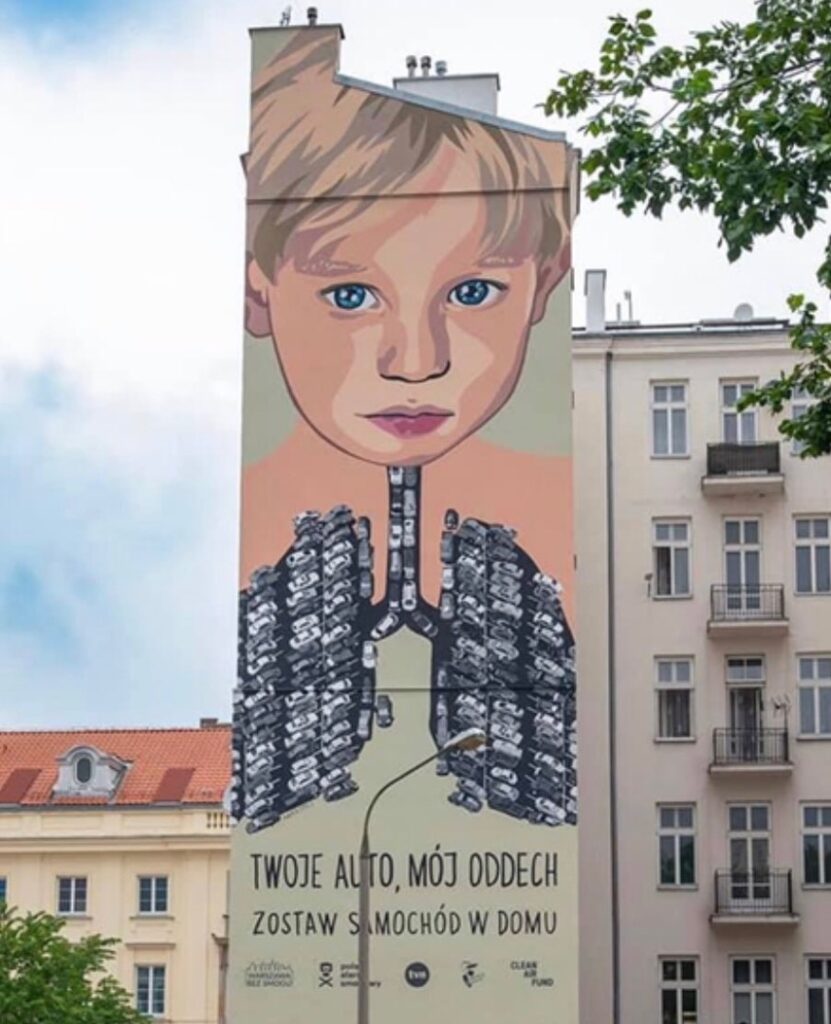
This logic of displacement has been long noticed by many astute observers. From indigenous critiques of industrial culture to systems theorists wary of the back-slapping self-congratulations of Western, Educated, Industrialized, Rich Democratic (WEIRD) countries,[9] sustainability discourse has too often been cover for NIMBYism.[10] If we are to approach a just transition away from ecocide, this requires NIABYism: Instead of “not in my backyard,” when we acknowledge that pollution is linked to preexisting inequality, we realize that what we really need are coordinated policies that render odious industries “not in anybody’s backyard.”[11] And those who wish to fight for the maintenance of environmental injustice-producing contamination have an imperative to move next to those sources of extraction, those disease-causing factories. If they believe in the sanctity of those industries, then the CEOs of those companies and their shareholders ought to become the fenceline communities to these most harmful point sources of pollution.
In dealing with the health and ecological harms from chemical exposures, regulators have been behind the curve, playing a game of eternal catch-up. For every after-the-fact regulated chemical, the chemical industry has another stack of chemicals on the shelf ready to deploy to markets. Such is the case with Monsanto’s (now Bayer) glyphosate, which exposed as associated with Non-Hodgkin’s Lymphoma, has brought out the even more deadly pesticide dicamba as its replacement. Or, DuPont’s replacement of one PFAS[12] product with another – the endocrine-disrupting ‘forever’ chemicals used in GoreTex jackets and Teflon pans have simply switched a molecule in their organofluorine polymers – we now have GenX instead of PFOAs (Perfluorooctanoic acids, also known as C-8). Such unfortunate substitutions cannot be claimed as victories.
To combat the current Sisyphusian role of chemical regulatory agencies playing “chemical whack-a-mole,” chemical researchers have begun calling for a toxic-until-proven-safe rather than safe-until-proven-toxic paradigm.[13] Many of the chemicals we use currently are shortcuts – they allow unsustainable lives at the expense of others—past, present, and future, human and more-than-human. To get to equity and sustainability, we need to rethink the use, purpose, and place of chemicals in our material environments.

A truly ‘green’ (biocompatible) chemistry needs a toxic-until-proven-safe framework, working to eliminate the worst known chemicals (especially those that cause reproductive health effects and endocrine disrupters, like organophosphates). Additionally, we need to thoroughly reconsider the trade-offs we’ve implicitly accepted for chemical modernism. If we’re to escape the confines of chemical colonialism, we can’t expect to simply switch out different chemicals in an industrial ecology run on toxins based in inequality.
Biomimicry and indigenous materials science needs to be mainstreamed and funded, in order to find nontoxic ways not just of replacing existing toxic chemicals, but to modulate our material environments to not rely on quick and easy disposable chemical-fueled solutions.
References
[1] Fabian Scheidler, The End of the Megamachine (Ridgefield, CT: Zero Books, 2020), 80.
[2] Scheidler, 79.
[3] Danielle S. Allen, Talking to Strangers: Anxieties of Citizenship since Brown v. Board of Education (Chicago: Univ. of Chicago Press, 2004).
[4] Carolyn Merchant, The Death of Nature: Women, Ecology, and the Scientific Revolution (New York: Harper & Row, 1980), 38.
[5] Timo Maran, “Enchantment of the Past and Semiocide. Remembering Ivar Puura,” Sign Systems Studies 41, no. 1 (May 17, 2013), https://doi.org/10.12697/SSS.2013.41.1.09.
[6] John M. Gowdy and Carl N. McDaniel, “The Physical Destruction of Nauru: An Example of Weak Sustainability,” Land Economics 75, no. 2 (May 1999): 333, https://doi.org/10.2307/3147015.
[7] Robert Proctor, “Agnotology: A Missing Term to Describe the Cultural Production of Ignorance (and Its Study),” in Agnotology: The Making and Unmaking of Ignorance, ed. Robert Proctor and Londa L. Schiebinger (Stanford, Calif.: Stanford University Press, 2008), 7.
[8] Lawrence Summers, “The Lawrence Summers Memo,” The Whirled Bank Group, December 12, 1991, http://www.whirledbank.org/ourwords/summers.html.
[9] Joseph Henrich, Steven J. Heine, and Ara Norenzayan, “The Weirdest People in the World?,” Behavioral and Brain Sciences 33, no. 2–3 (June 2010): 61–83, https://doi.org/10.1017/S0140525X0999152X.
[10] Leah Aronowsky, “Gas Guzzling Gaia, or: A Prehistory of Climate Change Denialism,” Critical Inquiry 47, no. 2 (January 2, 2021): 306–27, https://doi.org/10.1086/712129; Stan Cox, The Green New Deal and Beyond: Ending the Climate Emergency While We Still Can (San Francisco, CA: City Lights Publishers, 2020).
[11] Yogi Hale Hendlin, “Surveying the Chemical Anthropocene: Chemical Imaginaries and the Politics of Defining Toxicity,” Environment and Society 12, no. 1 (September 1, 2021): 181–202, https://doi.org/10.3167/ares.2021.120111.
[12] Per- and polyfluoroalkyl substances.
[13] Alessandra Arcuri and Yogi Hale Hendlin, “The Chemical Anthropocene: Glyphosate as a Case Study of Pesticide Exposures,” King’s Law Journal, September 19, 2019, 1–20, https://doi.org/10.1080/09615768.2019.1645436.
Cover image: “The Iron and Steel Works, Barrow.” Washington Post illustration; iStockphoto
Yogi Hale Hendlin’s work draws on environmental philosophy, especially decolonial kinds, and public health policy, including the corporate determinants of health, to dismantle industrial epidemics. Hendlin is an assistant professor at Erasmus University Rotterdam in the Erasmus School of Philosophy, and Dynamics of Inclusive Prosperity Initiative, as well as Research Associate in the University of California, San Francisco’s Environmental Health Initiative. As Editor-in-Chief of the journal Biosemiotics, Hendlin explores the biological basis for redesigning human systems biomimetically rather than extractively, benefitting both human and more-than-human nature. www.yogihendlin.com
See Dr. Hendlin’s article “Surveying the Chemical Anthropocene: Chemical Imaginaries and the Politics of Defining Toxicity” in the 2021 issue of Environment and Society: Advances in Research, Pollution and Toxicity: Cultivating Ecological Practices for Troubled Times.
From Risk to Vulnerability: Living through Long Covid
All that is solid melts into air, all that is holy is profaned, and man is at last compelled to face with sober senses, his real conditions of life, and his relations with his kind.
Marx and Engel, the Communist Manifesto
When my world evaporated into exhaustion with Long Covid, I found myself pondering Marshall Berman’s (1988) insight from his eponymous book, “To be modern is to find ourselves in an environment that promises us adventure, power, joy, growth, transformation of ourselves and the world—and at the same time, that threatens to destroy everything we have, everything we know, everything we are” (15). While modernity brought exhilarating emancipation of education, movement, and identity, it also eroded collective safety nets. Albeit “freed” from the constraints of custom, individuals became vulnerable in new ways to accidents, crashes, hazards, or disasters—be they natural, technological, economic. . . or viral. As public health authorities unfurled confusing, if not erratic, directives about mask mandates and vaccination priorities over the last two years, we learned once again how utterly dependent our lives are to opaque bureaucratic institutions and a standardized “utopia of rules” (Graeber 2015). In these contexts, things tend to fall apart (Achebe 1959).
Read More “From Risk to Vulnerability: Living through Long Covid”
Weaponizing Nature: the co-production of Landmined Landscapes in the Colombian Amazon
A line of ants walking throughout a 5-liter white plastic recipient, wrapped in black trash bags and trespassed by roots, was my first experience with a landmine. This artifact enmeshed into nature and co-produced a toxic wilderness.
Read More “Weaponizing Nature: the co-production of Landmined Landscapes in the Colombian Amazon”
Confronting Legacies of Toxic Goodness: Speculative Reflections from the 4S 2021 Annual Meeting
Renewable energies, green/blue/bio-economies, waste management systems, as well as sustainable agriculture and aquaculture hold within them the possibility of working towards a “Greater Good”, however, “goodness” is frequently built on toxic colonial and capitalist processes that are rendered invisible through sustainability discourse. How can good practices, relationships, and things be cultivated in an environment where toxicants, toxic politics, and toxic relationalities are constantly reproduced? How do toxic production systems—based on extractivism, colonialism, and plantation capitalism—foment new forms of sustainability that cannot be excised from these deadly foundations?
Caring for women in a contaminated environment
Located in the Southeast of Mexico (Figure 1), the state of Chiapas is among the top 10 states in pesticides use (Bejarano González 2017). Since 2012, I have been conducting research in Chiapas on women’s reproductive healthcare. I collaborated with the Organization of Indigenous Doctors of the State of Chiapas (OMIECH in Spanish) to document the impact of reproductive health policies on Indigenous midwives’ practices. In rural areas, these women, who have acquired knowledge through their own experience of pregnancy birth and postpartum and/or trained with an older midwife, provide daily care to women and their families. As farmers, they are also acute observers of environmental change.
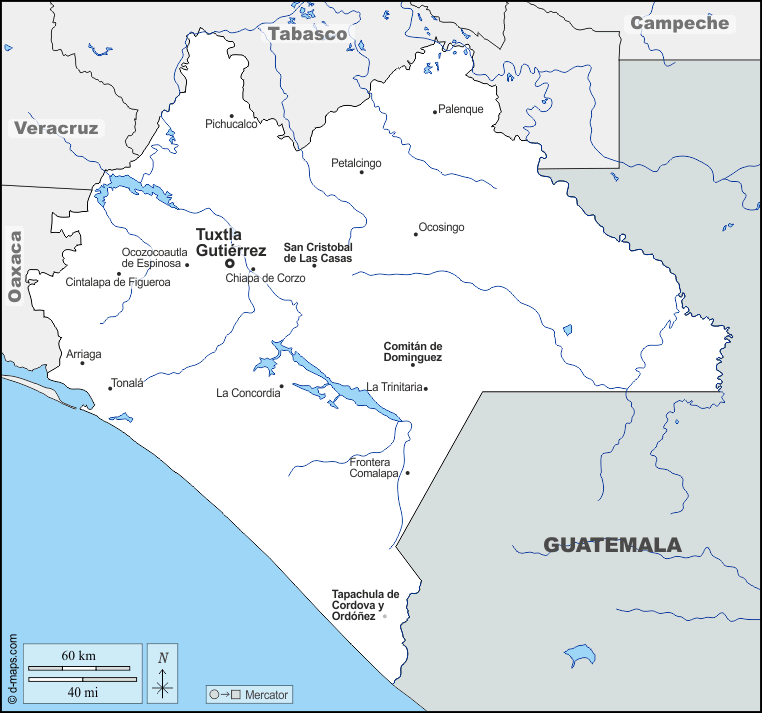
In May 2019, the town of San Cristóbal de las Casas hosted the First Mexican congress on agroecology. During the opening of the congress, voices in the audience started chanting, “Without feminism, there is no agro-ecology” (Figure 2). The group, made of a dozen women — researchers, activists, students, farmworkers, wanted to draw attention on the intersections between women’s rights and environmental sustainability. Later, during a roundtable, the founder of an “organic and feminist” coffee brand explained, “We need agro-ecology to be a choice for life (opción de vida). There can’t be agroecology if there is machismo, if there is violence, if there isn’t food on the table. Agroecology is a choice for our children’s lives.”
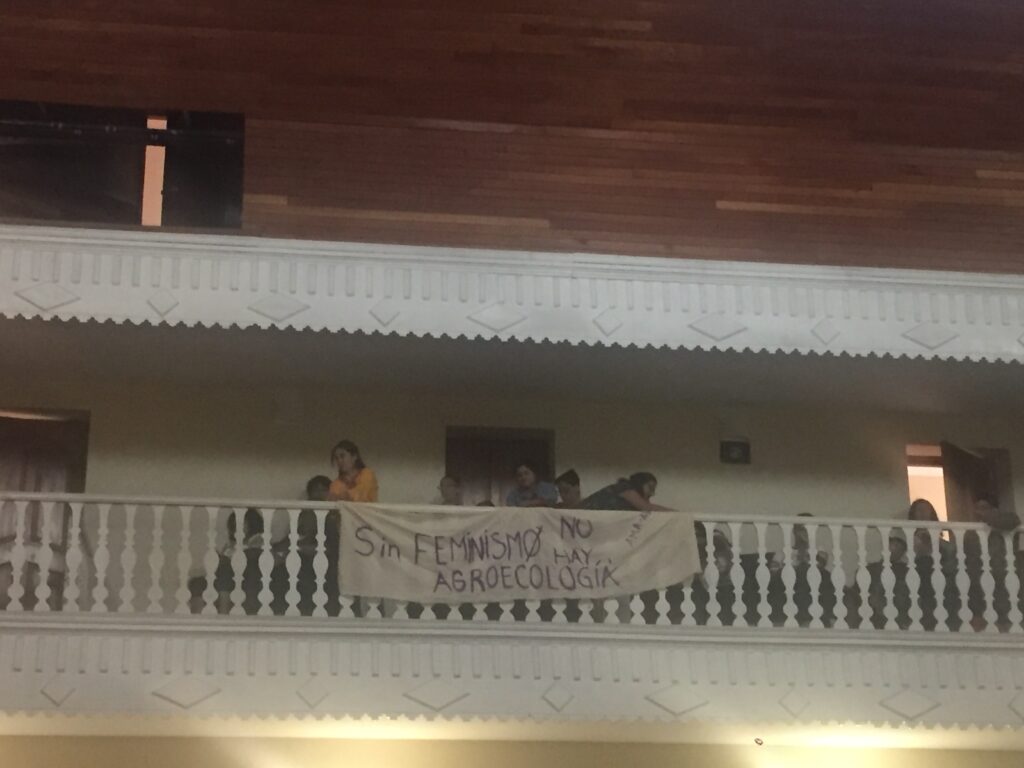
In Mexico, over 180 highly hazardous pesticides component are authorized, including many forbidden by international conventions (Bejarano González 2017). Glyphosate residues have been found in industrial corn tortillas and human bodily fluids. A Tsotsil midwife in her late 30s from a village near San Cristóbal, told me she remembered when as a child her father started using pesticides in the milpa (cornfield). His own father told him to stop, but the damage was already done. “Even though he does not use it anymore, there is contamination everywhere. Everything is contaminated.” When “everything” around is contaminated – by mines, pesticides, corporations – what does caring for one’s family and community look like?
Indigenous women at the crossroads of environmental and reproductive justice
Midwives across the continent position themselves as defenders of women’s right to choose how to give birth and as protectors all forms of life – human and nonhuman (Dennis and Bell 2020). Kichwa environmental activist Elvia Dahua, leader of the Confederation of Indigenous Nationalities of the Ecuadorian Amazon described this relationship in an interview for the Tejiendo Cuerpos Territorios (Weaving Body Territories) platform: “Us women, we are those who work the land. The first who chose the water to drink, to feed the children, the husband. This is why us, we know the value of mother-earth, how we can care for nature, how we can care for the earth, the territory, because the territory is our market, the territory is our pharmacy where we can find ancestral medicine.”[1] To express the intersection in which Indigenous women stand Katsi Cook, Mohawk Nation at Akwesasne midwife, coined the term environmental reproductive justice: “Environmental justice and reproductive justice intersect at the very center of woman’s role in the processes and patterns of continuous creation” (Cook 2007:62).
In Chiapas, Indigenous women have been at the forefront of the defense of the territory (Olivera Bustamante, Cornejo Hernández, and Arellano Nucamendi 2016; Valadez 2014). They draw on their multiple experiences as mothers, midwives, farmers and community leaders to raise awareness on the health and cultural consequences of environmental change. Midwives have a close relationship with their environment, in which they find medicine to cure their patients during pregnancy, childbirth and postpartum (Icó Bautista and Daniels 2021). During a meeting of midwives in Mexico, organizations from various countries of Abya Yala[2] shared a statement highlighting the importance of caring for all forms of life. Their discourse interwove the sacredness of birth and Indigenous peoples’ strong connection to the earth: “Caring for the way we are born means defending the sacred link that binds us to the earth […]. We fully trust women and their babies’ embodied knowledge and the strength of mother-earth. This is why we rely on its [natural] elements to maintain balance and put ourselves at the service of life and its cycles” (Consejo de Abuelas Parteras Guardianas del Saber Ancestral de México et al. 2018). Contamination threatens this balance in many ways. One of the forms I have documented in my research is the impact on medicinal plants, which midwives use on a daily basis.
Caring when plants disappear
For thirty-five years, the OMIECH has organized community health workshops in Indigenous communities of the state. The goal of the organization is to strengthen Indigenous medical knowledge. The Women and Midwives Section, coordinated by Micaela Icó Bautista, organizes community workshops focused on pregnancy, birth, postpartum and on common diseases in the communities (Icó Bautista and Daniels 2021). In these workshops, participants share how they cope with common illnesses, by sharing medicinal plant recipes, massage indications and spiritual ceremonies. Knowledge exchanged during workshops is then compiled into booklets that are shared back in the villages.

In 2014-2015, I helped organize some of the workshops. One of them took place in a community in the municipality of Huixtan, where Micaela Icó Bautista and I met with Doña Lupe, a Tseltal midwife in her 50s, and member of OMIECH. When we arrived, we followed the midwife and her son-in-law into the milpa behind the house, where they searched for medicinal plants that would be used as props during the workshop (Figure 3). As soon as the workshop started, participants listed the common diseases of women, men and children in the community. In the second part of the workshop, all were invited to share their knowledge about local remedies.
A few years later, in 2018, Micaela returned to the same village. When I met with her a few months later, she described how, during the workshop, older midwives like Doña Lupe recalled the chikin burro (“donkey’s ear,” a mix between the Tseltal word for ear, chikin, and the Spanish word for donkey, burro) a medicinal plant used during childbirth and postpartum.[3] Younger women were puzzled about the name, and started laughing, not knowing it was a medicinal plant. Micaela reported, “The parteras they said that before there were plenty of this plant, but now it is becoming scarce. In the hills, there are barely any left.”
In the workshop’s minutes, women attributed the disappearance of the chikin burro to a combination of factors, including deforestation linked to the construction of new roads, a shift in agricultural practices (from family-based to industrial), and the use of pesticides. Chikin burro was not the only plant affected, they added, “Plants like epazote, coriander, green tomato… They are disappearing. They used to grow in the milpa and now they don’t anymore, because of the pesticides. It all started 5 years ago, but only now they are realizing that it is hurting the earth.” During the workshop, Doña Lupe poignantly described the consequences of such a loss, saying, “it is like putting an end to part of community life.” The situation in Huixtan is not unique, and across Mexico Indigenous peoples experience how the loss of plants is also a loss of their language (Arriaga-Jimenez, Perez-Diaz, and Pillitteri 2018).
With disappearing plants, and the health impacts of environmental contamination, midwives are confronted to new diseases while their tools to cure are getting scarcer. For María del Carmen, a 38-year-old midwife who lived nearby the town of Comitán, and who started attending births when she was 17, “There have been changes in women’s health because of bad eating habits. Since childhood, they eat Sabritas (chips), candy, ham, cheese… This is not eating! In the past, we ate a lot of mushrooms from the forest. Not anymore. And women, they don’t even listen to us anymore. From there, complications arise: hemorrhage, miscarriage…”
During my work with Micaela Icó Bautista, I noticed the increasing trouble she faced in collecting recipes when editing the boletines; there were each time fewer people to share recipes, as older midwives passed away and some plants were more difficult to find. But she tirelessly asked midwives about their “secrets” (Icó Bautista and Daniels 2021), and encouraged them to start their own medicinal garden, to keep transmitting the knowledge which is essential for the health of women and their families, and the cultural reproduction of Indigenous communities.
Mounia El Kotni (PhD, SUNY Albany 2016) is postdoctoral researcher in anthropology at the Cems-EHESS Paris, and 2019-2021 Fondation de France grantee in environmental health (grant n. 00089806). She has conducted research on maternal health policies in Mexico, and the consequences on traditional midwives’ practices since 2013. Her current research is focused on the gendered politics of environmental contamination and environmental protest in Chiapas. Contact: www.mouniaelkotni.com
References
Arriaga-Jimenez, Alfonsina, Citlali Perez-Diaz, and Sebastian Pillitteri
2018 Ka’ux Mixe Language and Biodiversity Loss in Oaxaca, Mexico. Regions and Cohesion 8(3). Academic OneFile: 127-.
Bejarano González, Fernando, ed.
2017 Los Plaguicidas Altamente Peligrosos En México. Texcoco, Estado de México: Red de Acción sobre Plaguicidas y Alternativas en México, A. C. (RAPAM).
Consejo de Abuelas Parteras Guardianas del Saber Ancestral de México, Consejo de Abuelas Parteras Guardianas del Saber Ancestral de las Américas, Nueve Lunas S.C., Oaxaca, et al.
2018 Pronunciamiento. Foro “Partería, Cultura, Ancestralidad y Derechos”. Oaxaca, México.
Cook, Katsi
2007 “Environmental Justice: Woman Is the First Environment.” In Reproductive Justice Briefing Book; A Primer on Reproductive Justice and Social Change Pp. 62–63. Pro-Choice Public Education Project.
Dennis, Mary Kate, and Finn McLafferty Bell
2020 Indigenous Women, Water Protectors, and Reciprocal Responsibilities. Social Work 65(4): 378–386.
Icó Bautista, Micaela, and Susannah Daniels
2021 OMIECH: Traditional Maya Midwives Protecting Women’s Health. Cultural Survival Quarterly 45(1): 26–27.
https://www.culturalsurvival.org/publications/cultural-survival-quarterly/omiech-traditional-maya-midwives-protecting-womens-health
Olivera Bustamante, Mercedes, Amaranta Cornejo Hernández, and Mauricio Arellano Nucamendi
2016 Organizaciones campesinas y de mujeres de Chiapas. Movimiento Chiapaneco en Defensa de la Tierra, el Territorio y por el Derecho de las Mujeres a Decidir. Universidad de Ciencias y Artes de Chiapas, Centro de Estudios Superiores de México y Centroamérica.
http://repositorio.cesmeca.mx/handle/11595/877, accessed May 30, 2018.
Valadez, Ana
2014 Saberes Femeninos En El Ámbito Comunitario Campesino. Contrahegemonía, Defensa Del Territorio y Lo Cotidiano En La Lacandona. In Más Allá Del Femenismo. Caminos Para Andar. Márgara Millán, ed. Pp. 145–154. México, D.F: Red de Femenismos Descoloniales.
[1] Interview available at https://youtu.be/pzqkOdb76A4
[2] The Kuna word for territory, used by Indigenous activists to refer to the American continent in a decolonial position.
[3] I was not able to retrieve the Latin name of the plant.




